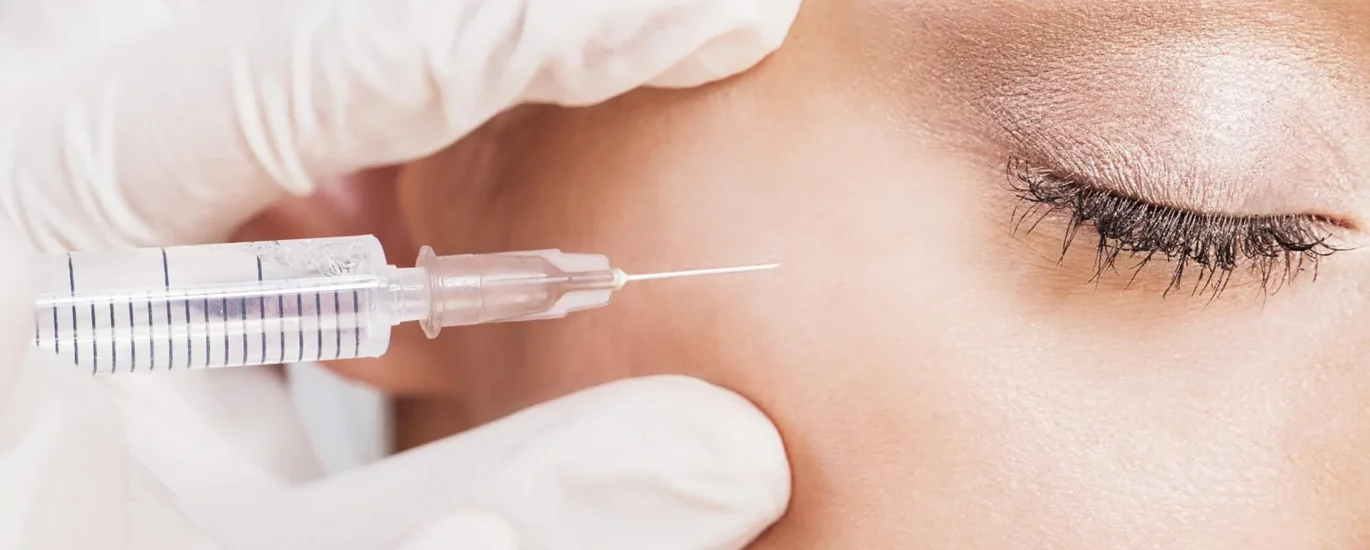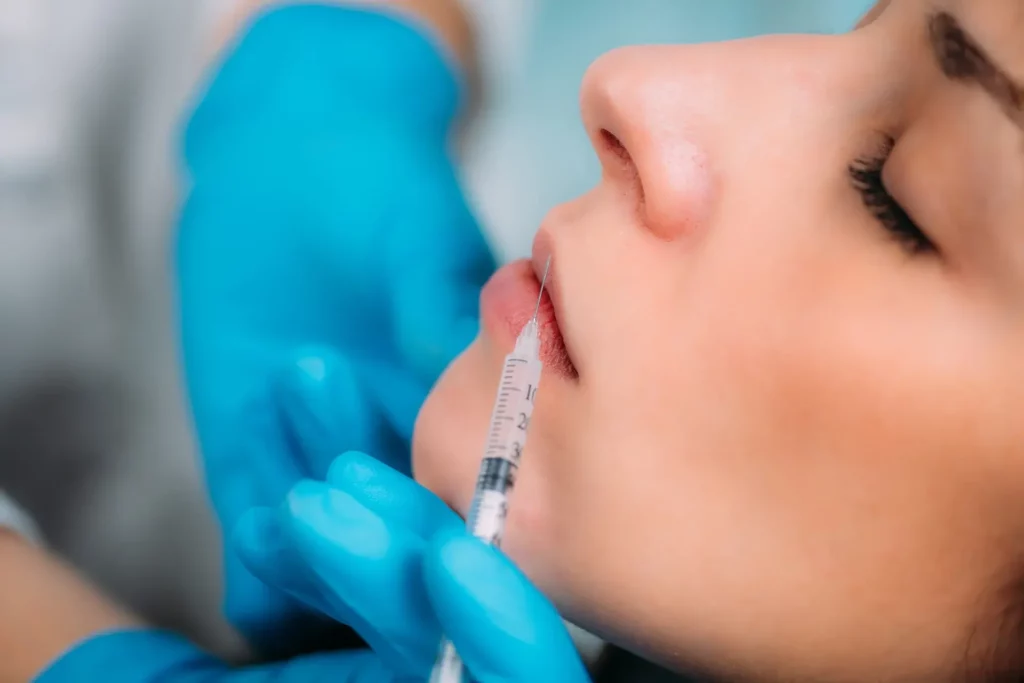

wordpress-seo domain was triggered too early. This is usually an indicator for some code in the plugin or theme running too early. Translations should be loaded at the init action or later. Please see Debugging in WordPress for more information. (This message was added in version 6.7.0.) in /home/sehatnagar.com/public_html/wp-includes/functions.php on line 6114
Lip fillers are very popular these days for making lips look fuller and more beautiful. Many people are opting for this cosmetic procedure to enhance the shape and volume of their lips. However, it’s important to understand that there are potential risks and complications involved, especially when it comes to something called “vascular occlusion.” Vascular occlusion means that the blood vessels in the lips can get blocked during the lip filler injections. This can happen if the filler material accidentally goes into a blood vessel or if the injected volume puts pressure on the blood vessels. When vascular occlusion occurs, it can cause damage to the tissues and even lead to tissue death if not taken care of quickly.
That’s why it’s crucial for both the people getting lip fillers and the professionals doing the injections to be aware of the risks and complications, especially vascular occlusion. People who want lip augmentation should know about the possible problems and choose a skilled and experienced professional to do the procedure. And professionals should stay updated on the latest techniques and safety measures to minimize risks and handle any issues that may arise. In this article, we will explain in simple terms what vascular occlusion is and how it can happen during lip filler injections. We’ll talk about the signs to watch out for, how to manage it if it happens, and most importantly, how to prevent it from happening in the first place. By understanding and sharing this information, we hope to promote safety and make sure that lip augmentation procedures are done as safely as possible.
Vascular occlusion means that the blood vessels in the lips get blocked or clogged during lip filler injections, which can cause problems. Let’s understand how this happens and why it’s important to know. When getting lip fillers, a substance is injected into the lips using a needle or tube. Sometimes, by accident, the filler material can enter a blood vessel, causing the blood flow to be blocked. The injected filler can also put pressure on the nearby blood vessels, squeezing them and causing them to get blocked.
When vascular occlusion occurs, the affected area of the lips doesn’t get enough blood supply. This is bad because the lips need blood to stay healthy and nourished. Without enough blood flow, the tissues in the lips can get damaged and even start to die, which is called necrosis. This can lead to swelling, pain, and other problems. The way vascular occlusion happens is when the filler material goes into a blood vessel and blocks it. Some fillers can also make the blood vessels become narrow, reducing the blood flow. Additionally, when a large amount of filler is injected, it can squeeze the blood vessels and cause them to get blocked too.
Understanding the common causes and risk factors that contribute to the development of vascular occlusion during lip filler injections is essential in preventing this complication. Let’s explore these factors and their significance in more detail.
The size of the needle used during lip filler injections can play a role in the occurrence of vascular occlusion. Smaller needles have a lower likelihood of accidentally entering blood vessels, reducing the risk of blockage. Larger needles, on the other hand, can increase the chances of vessel puncture and subsequent occlusion.
The technique employed by the practitioner during the injection procedure is crucial in minimizing the risk of vascular occlusion. A skilled practitioner will use a slow and careful injection technique, allowing for precise placement of the filler material while avoiding blood vessels. Injecting the filler too rapidly or with excessive force can increase the chances of filler entering a blood vessel and causing occlusion.
The anatomy of each individual’s lips can also contribute to the risk of vascular occlusion. Some people may have lip anatomy that makes their blood vessels more vulnerable or harder to avoid during injections. Variations in vessel location, depth, and branching patterns can increase the complexity of the procedure and the risk of occlusion. Understanding the patient’s unique lip anatomy is crucial for minimizing complications.
People with pre-existing vascular conditions, such as vascular malformations or blood clotting disorders, may have a higher risk of vascular occlusion during lip filler injections. These conditions can affect the integrity and functioning of the blood vessels, making them more susceptible to blockages. It is important for practitioners to conduct a thorough pre-procedure assessment to identify any such conditions and take appropriate precautions.
Inadequate training and lack of experience in performing lip filler injections can significantly increase the risk of vascular occlusion. Skilled and experienced practitioners possess the knowledge and expertise to navigate the lip anatomy carefully and accurately deliver the filler material. Continuous education and training are vital to stay updated on the latest injection techniques and safety measures.
Certain filler materials have been associated with a higher risk of vascular occlusion. Highly viscous fillers or those with a higher tendency to block blood vessels can increase the chances of occlusion. The choice of filler material should consider its safety profile and the potential risk of vascular complications.
It’s important to recognize the signs of vascular occlusion right away during or shortly after getting lip fillers. Here are some immediate signs to watch out for:
It’s really important to recognize these signs early and take action quickly:
Sometimes, the signs of vascular occlusion can show up hours or even days after the lip filler injection. Here are some delayed symptoms to be aware of:

Keeping an eye on your lips after the procedure is important to catch any delayed symptoms or potential vascular occlusion. If you notice any unusual changes, make sure to tell your practitioner. Regular follow-up appointments allow for a thorough examination and early detection of complications.
When medical professionals suspect vascular occlusion during a lip filler procedure, it is crucial to take swift action to minimize potential complications. Here are the steps they should take:
When addressing vascular occlusion, medical professionals have various treatment options available, depending on the severity and extent of the occlusion. These options include:
A thorough pre-procedure assessment is crucial in preventing vascular occlusion during lip filler injections. This assessment involves evaluating the patient’s medical history, conducting a physical examination, and identifying potential risk factors. Here’s why it’s significant:
Proper injection techniques significantly reduce the risk of vascular occlusion during lip filler procedures. Here are some key considerations:
Vascular occlusion is a serious complication that can happen during lip filler injections, but we can take steps to prevent it and manage it effectively. It’s important to recognize the signs, like changes in color, pain, and unusual texture, and take quick action by stopping the procedure and informing the practitioner.
To prevent vascular occlusion, it is important for practitioners to assess patients thoroughly before the procedure, considering their medical history and examining their lips. They should also use proper injection techniques, like using smaller needles and making multiple small injections, and stay updated with ongoing training.
CoolTone Before And After: Transform Your Body With Cutting-Edge Technology